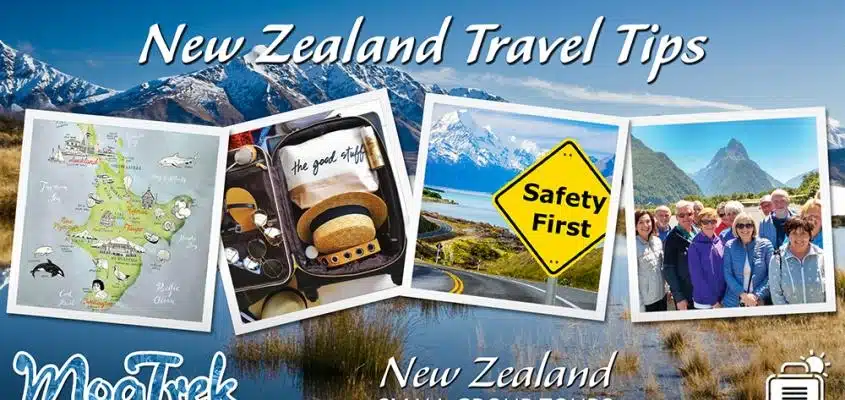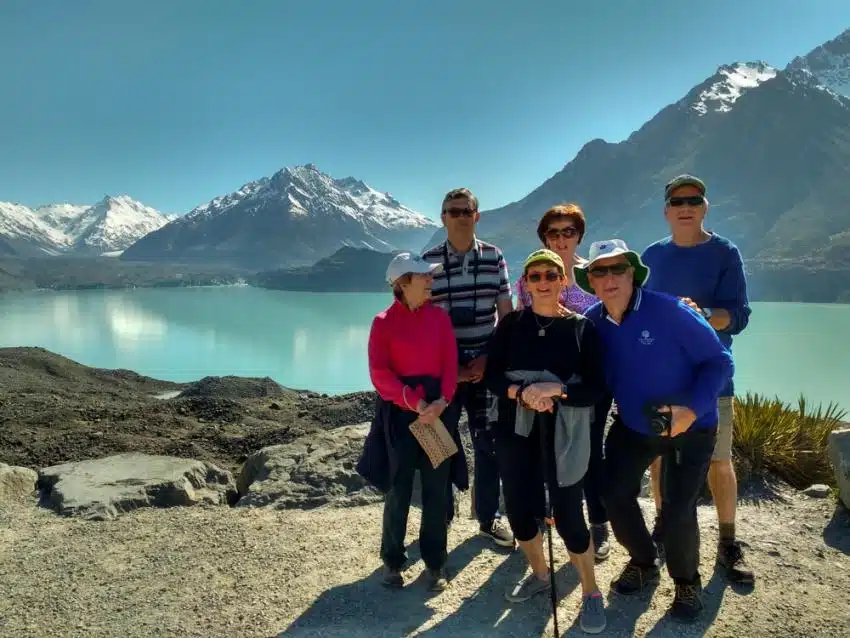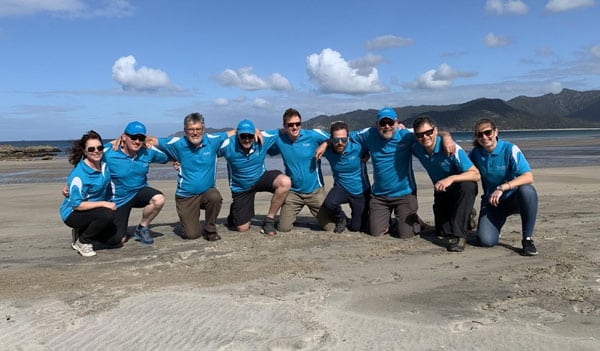New Zealand is one of the most naturally beautiful travel destinations in the world. Here are some great travel tips, common questions and important things to know before you go.
This article is for anyone planning a trip to New Zealand but still have a few details to work out, like when to go, how much time you need, where to visit etc. are still figuring out the details. We’ll give you some really in depth answers (and links to more resources) on things like safety in New Zealand, when’s the best time to travel, how long you should visit for, our favourite spots in both the North and South Islands and more.
Here are some answers to some of the most commonly asked questions about traveling to New Zealand. For many of these questions we have written in-depth helpful blog posts with everything you need to know about that question. If that is the case, we have provided a link to the appropriate blog post so that you can learn more.
As always, we are happy to help you with all aspects of planning your New Zealand trip. If your question isn’t listed here, please contact us and we will do our best to give you the answers you need.
The most common questions we get about travelling to New Zealand:
2. When Is The Best Time to Visit New Zealand?
3. How Much Time Do I Need to Visit New Zealand?
4. Should I Visit the North Island, The South Island or Both?
5. What Kind of Accommodation is Available in New Zealand?
6. How Much Do Things Cost in New Zealand?
7. Should I Drive Myself or Take a Tour?
8. What is Driving Like In New Zealand?
9. What is the Weather Like in New Zealand?
10. What Do I Need to Pack for My Trip?
11. Is Tipping Expected In New Zealand?
12. Time Differences and Getting to NZ
1. How Safe is New Zealand?
The answer is: pretty darn safe.
Of course, there is no such thing as a perfect paradise. We’re not saying that crime doesn’t exist in New Zealand. However, compared to most travel destinations New Zealand is a delightfully safe place to be and the crime rates are very low. It’s no wonder that the locals say “no worries” so often – it’s usually quite accurate.
The police force is mostly uncorrupted, they don’t carry personal firearms and you can walk the streets and do what you want to do without fear. Plus, New Zealanders are very helpful people who will be there to assist if you get in trouble or you just get a little bit lost and need directions.
New Zealand is a happy and easy-going country that is mostly free from risks and dangers. According to the 2017 Global Peace Index, which rates countries on their risk of personal violence, New Zealand is the second safest country in the world. Iceland received the top ranking and it’s pretty nice too … but we have more sunshine. 🙂
Unlike Australia, we don’t have any poisonous snakes or spiders lurking in the underbrush. In fact, New Zealand has pretty much zero dangerous wildlife to worry about. The only danger you might encounter is a Kea (a parrot-like bird that lives in the South Island) pecking on the rubber on the windscreen or door of your vehicle.
Some of the only issues happen when tourists underestimate the power and scale of New Zealand’s natural areas. If you plan to hike or camp in New Zealand, make sure that you do your research, check the weather forecast and let someone know where you are going. Also, it’s always a good idea to go hiking or camping with a friend or in a group!
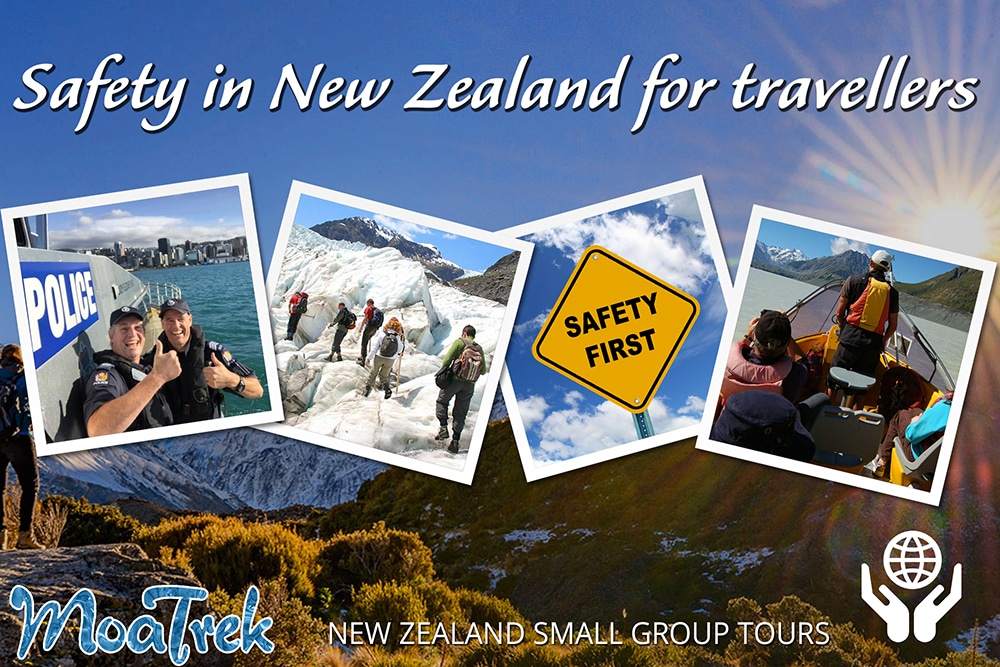
Read more about safety in New Zealand for travellers in this blogpost here.
2. When is the best time to visit New Zealand?
There’s not really a bad time to plan a trip to New Zealand – the weather is wonderful all throughout the year. However, depending on what type of experience you want to have you might prefer visiting during certain times of the year.
For example, if you love lounging on the beach in the sunshine you’ll want to visit during the summer months – but if you enjoy fresh produce and cooler temperatures you’ll want to book your trip for the spring. Remember, if you are from the Northern Hemisphere the seasons in New Zealand are opposite, so if you visit during the holidays you’ll get to enjoy a Christmas barbeque in the sunshine.
We will discuss the weather in more detail later in question 9.
Read more about the best time to travel to New Zealand here.
3. How much time do I need to visit New Zealand?
Although New Zealand is a relatively small country, it is packed with things to see and do. You’ll be surprised at how quickly your time flies by when you are here. A week long visit won’t be enough to enjoy the main highlights – you’ll barely be able to scratch the surface.
If you want to be able to see the main sights on the North and South Islands we would recommend at least 14 days, but three weeks is more ideal. After all, you don’t want to rush this trip and spend all of your time traveling between destinations, you want to have time to relax and really enjoy the trip.
If you have always wanted to see New Zealand and you are planning a once in a lifetime trip, consider staying longer so that you can see everything on your kiwi bucket list. If you rush through this wonderful country you won’t have the time to truly experience the laid back friendliness of the people and the natural beauty of the landscapes.
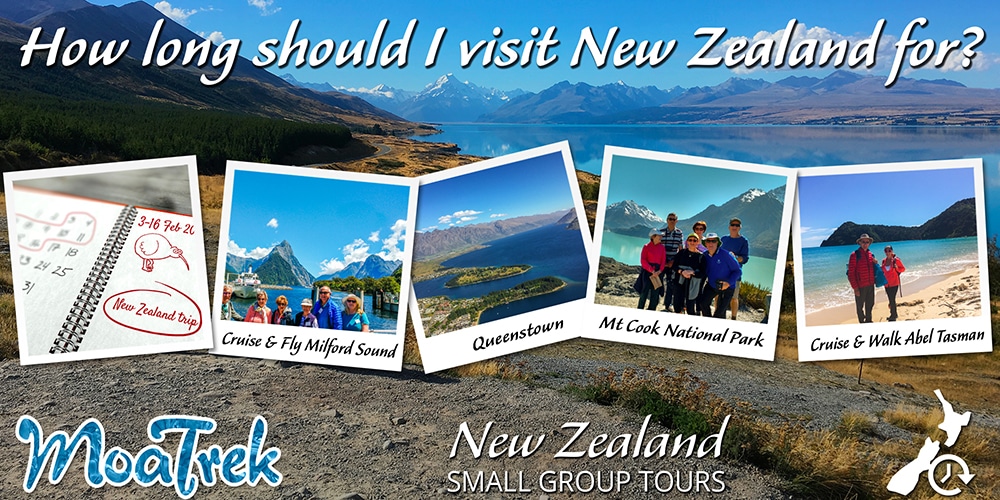
Read our handy article about how long you should visit for and what you can see in 2 or 3 weeks.
4. Should I visit the North Island, South Island or both?
If at all possible, you should visit both! They are each so different and beautiful in their own way. Each island has something unique that you cannot find on the other one and it’s only by experiencing both that you will have the full picture of New Zealand.
On the North Island you’ll find fascinating Maori culture, sandy tropical beaches, bubbling geothermal pools, the big city lights of Auckland and the art and culture of the capital city, Wellington. There are some unforgettable experiences that you can only have on the North Island, such as exploring hobbit holes in Matamata, going to the top of the highest building in the Southern hemisphere and skiing on an active volcano, Mt. Ruapehu. Check out our amazing North Island itinerary on the website.
On the South Island you will find fertile wine country, enormous glaciers, picturesque lakes and the thriving city of Christchurch, which has recovered impressively from the earthquake. Only on the South Island can you swim with the smallest dolphins in the world in Akaroa, see the Southern Lights, cruise through the majestic waters of Fiordland National Park and discover the rugged West Coast. Here is our favourite itinerary for the South Island, packed with a great balance of culture, adventure and relaxation.
5. What kind of accommodation is available in New Zealand?
New Zealand offers up a range of accommodation – from budget hostels for backpackers to luxurious hotels and everything in between. There is plenty to choose from, but it gets booked up quickly during high season so it’s important to book a place to stay in advance.
The accommodation that we have chosen on our tours offers the perfect mix between luxury, style and comfort. We have selected our favourite places to stay all around the country, so that you can relax in a pleasant environment during your stay. See the types of places that we stay in on our trips around New Zealand here. Warning – we don’t really rough it, we like all the comforts of home when we travel!
6. How much do things cost in New Zealand?
You’ll find that the cost of most things in New Zealand is comparable to the prices in North America and Western Europe. Prices for some things might be slightly higher, but this is simply because New Zealand is remote, so anything that isn’t locally sourced must be shipping from somewhere else.
Also, the cost of things such as flights, tours and accommodation will fluctuate throughout the year based on the peaks of the tourist season. If you don’t mind the cooler weather, consider visiting during the off season or shoulder season and you can enjoy a more affordable trip.
Take a look at our blog post with information on the cost of eating out in New Zealand. We outline the general cost that you can expect when eating out in a restaurant, including dining in casual cafes and in fine dining restaurants. As you can see from the comparison chart that we provide in this article, the costs are not much different than in the USA, UK, Europe or Australia.
You’ll certainly get what you pay for, however! You’ll notice that the quality of the cuisine in New Zealand is superb and that many restaurants focus on top notch, locally sourced ingredients made in fresh and innovative ways.
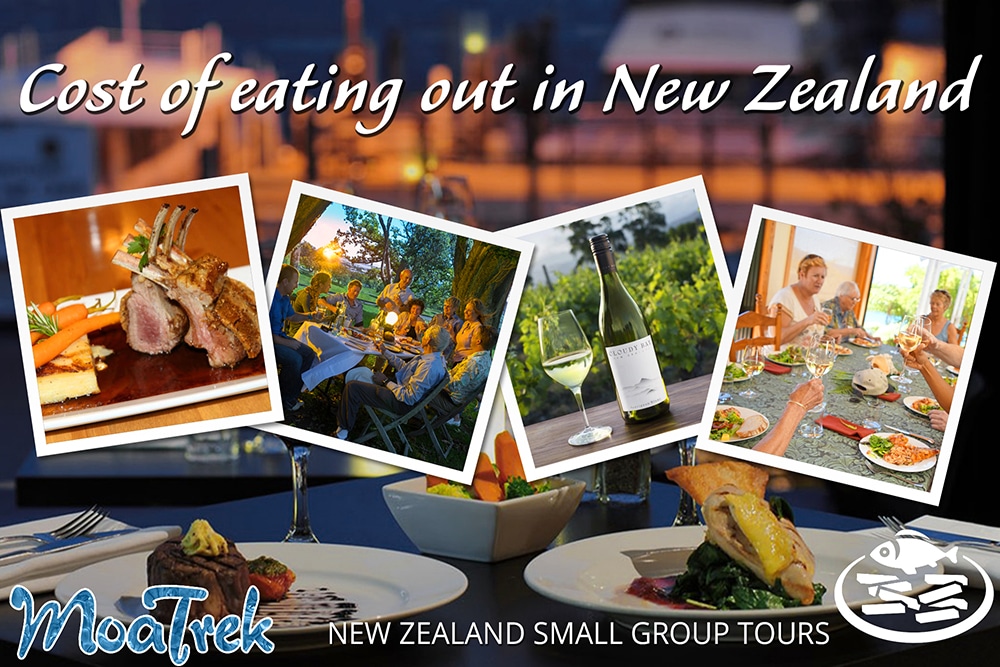
7. Should I drive myself or take a tour?
Good question! It’s really up to you and it depends on your personal travel preferences. There is no one right way to travel New Zealand.
Some people love having no schedule on a self drive tour while others love having an expert show them around the best highlights of the country. To learn more about all of the many ways to travel around New Zealand, read this blog post. You could even combine them both into one journey – take a group tour for the first two weeks of your visit and then rent a car for the last week to travel around to your own chosen destinations.
Here’s a quick summary of some of the factors to consider when you are planning your trip, for more info read this article on how to travel around New Zealand here.
| Reasons to Take a Group Tour | Reasons to Self Drive |
|---|---|
| You won’t have to worry about the navigation or the car rental, you’ll be able to just sit back and enjoy the ride. | You’ll have the freedom to make your own itinerary and your own schedule, stopping wherever you like. |
| You’ll be able to meet other adventurous travelers from around the world and enjoy socializing with them on your trip. If you are traveling alone, it’s a great way to make friends! | You can go to destinations that are slightly off the beaten track, which may not be on your typical tour itinerary. You can tailor your trip specifically to you and your interests. |
| If anything goes wrong or you have questions or concerns, you will be able to ask your tour guide for help. They are there to make sure that your trip goes smoothly! | You’ll be able to schedule activities that you are interested in, even if they are strange niche attractions that no one else is interested in. |
| On a group tour everything will be done for you, so you don’t have to worry about the hassle of booking accommodation or the stress of driving on a different side of the road that you are used to! | You can stay in any type of accommodations you choose, rather than having to stay in the ones offered by the tour company. |
| If you are short on time, a tour is a great way to see the main highlights of New Zealand in the most time efficient way. | You could even camp or stay with friends or relatives - it’s up to you. |
| To find out more about group travel read our handy guide here on how to find the right group for your trip. | If you are spontaneous and you don’t like knowing where you will be several days from now, a self drive tour will always keep you anticipating the next surprise. |
8. What is driving like in New Zealand?
If you had to describe driving in New Zealand in three words, it would be safe, fun and gorgeous. You’ll be motoring along through some of the most stunning landscapes that you have seen in your life.
Your journey will take you through deep valleys lined with towering mountain peaks, rolling hills dotted with cottages and vineyards and picturesque stretches of coastal highway. There are some areas of the country where you can drive for quite some time without seeing another vehicle on the road – although you may have to stop for some wandering sheep.
The New Zealanders who you will encounter on the roads are friendly and courteous and generally the road manners are quite good in New Zealand. Driving between Point A and Point B might take a little longer than you would guess from the map, because the roads are often winding and picturesque. Plus, you’ll want to stop and admire the view.
One of the only tricky things about driving in New Zealand if you aren’t used to it is driving on the left side of the road. If you are from North America, Europe or any location where they drive on the right side of the road you might find it a little bit tricky to adjust. Make sure that you take it slow at first and give yourself lots of practice before you attempt a long drive.
Also it can be difficult to keep your eyes on the road where there are so many stunning natural views to stare at, from glaciers to ocean vistas to snow-capped mountains. If you want to stop and gape in awe at a waterfall or a picturesque valley, make sure that you don’t stop on a bend and that you pull off the road completely, so that your vehicle doesn’t become a hazard for other drivers while you are snapping photos.
Check out our blog post on driving in New Zealand to learn more about what the experience is like. If you would rather save yourself the stress of driving on the other side of the road or navigating the winding roads, you could take a group tour instead. Our intimate small group tours are just the right size so that you’ll have a fun social experience without feeling like you are lost in a crowd on a big bus! You can let someone else do the driving and just sit back, listen to some great tunes, chat with your new friends and watch the ridiculously pretty countryside sliding past your window.
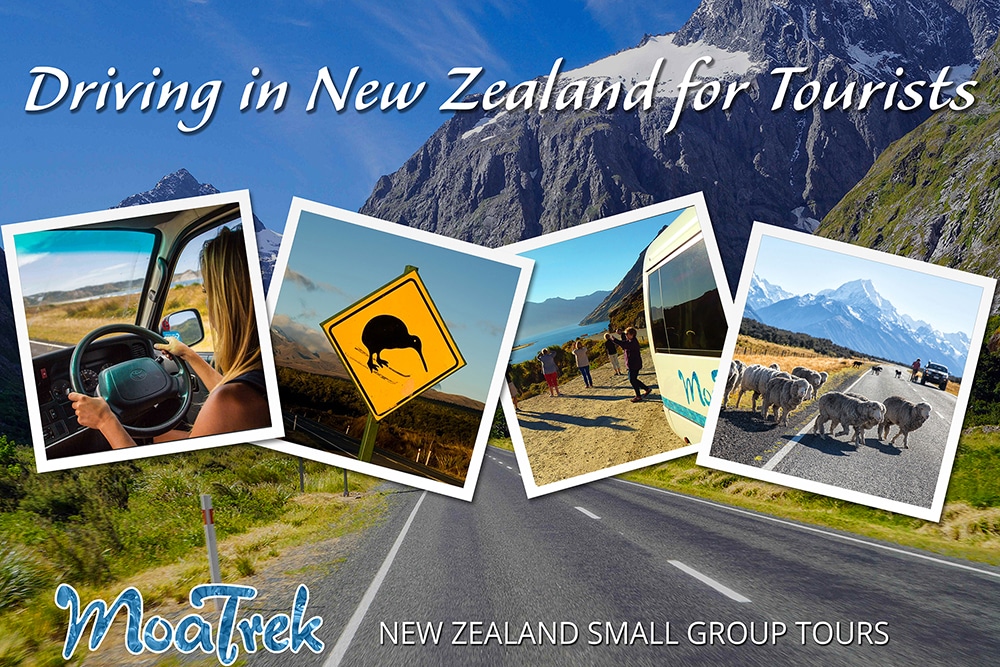
9. What is the weather like in New Zealand?
The wonderful thing about the weather in New Zealand is that it is surrounded by the ocean, which moderates the temperatures. That means that it is never too hot or too cold here – it’s always just right.
You could compare the climate here to the South of England, or the Pacific Northwest of North America. The summers are dry and sunny and the winters are slightly cooler, but you’ll never suffer from overwhelming heat and you won’t see snow unless you head up into the mountains.
Find out more in depth information about the weather in New Zealand here. It will give you more of an idea of what to expect during your trip, depending on what time of year you visit.
10. What do I need to pack for my trip?
The most important thing to remember when packing for New Zealand is: layers, layers, layers. No matter what time of year it is, the weather is changeable and you want to be prepared for anything.
Here are some of the essentials that you will want to bring along:
- A thin long sleeve layer. (We recommend NZ Merino wool, it keeps you cool in the heat and warm in the cold and wicks away sweat.)
- Tank tops and shirts.
Pants and shorts. - A rain jacket, just in case.
- A pair of hiking shoes – you won’t want to miss the gorgeous trails here!
- A hat to keep the sunshine off your face.
- A swimsuit and towel for enjoying the many pristine beaches.
11. Is tipping expected in New Zealand?
Tipping isn’t really prevalent in New Zealand culture in the way that it is in the USA. In the USA servers make less than minimum wage and they rely on tips to make up the rest of their income. In New Zealand the servers are paid a fair wage so tips are not necessary.
So, there’s no need to feel obligated to leave a tip when you eat in a restaurant in NZ. However, if you received excellent service and you would like to leave a tip, a gratuity of 10% would certainly be appreciated by your server.
At hotels in NZ, it is customary to tip $1-$2 to the person who carries your bag and to your room cleaners. Also, tipping tour guides is common, especially if they go above and beyond to make sure you have a good time.
Read our article on tipping in New Zealand here
12. Time differences and getting to New Zealand
You might also be wondering about the time difference and how long it takes to fly to New Zealand. After all, no matter where you are coming from, New Zealand is quite far away from everything! The flying time will likely be one of the longest flights you have ever been on – likely with a short stopover on the way so that you can get out and stretch your legs. However, once you get here you will quickly discover that it was worth the trip! Here’s a quick summary of how to get to New Zealand from the USA, UK/Europe and Australia.
If you are coming from the UK, keep in mind that New Zealand is 13 hours ahead of GMT during the NZ summer, thanks to Daylight Savings Time. When the UK switches to British Summer Time, NZ is 12 hour ahead. In May, June, July, August or September the difference is 11 hours. To put it simply, you can remember that NZ is approximately 12 hours ahead of the UK – give or take an hour. Here’s a handy article about the time difference between NZ and UK that explains it in more detail.
If you are coming from the USA, the time difference is even greater. If it is 7pm on a Wednesday in San Francisco, it will be 2pm on a Thursday in Queenstown. If you are coming from Washington DC, the difference will be 18 hours. This varies of course, as the USA has 9 different time zones. Read this blog post about US vs NZ time zones for more info.
These are just a few of the important things that visitors to New Zealand should know before they head to the Land of the Long White Cloud.
However, don’t worry too much about planning your trip down to the smallest detail. New Zealand is a very laid back and easy country to travel around, so you can just book your trip, make a few plans and figure out the rest when you get here.
Here at MoaTrek we are always happy to help you during your visit. If you have any questions before or after you arrive in New Zealand, feel free to ask us. We have been running New Zealand tours for seniors to the very best spots in the land for many years and we love to go above and beyond to make sure you have a fantastic time. We reckon planning your trip is all part of the fun, enjoy!


